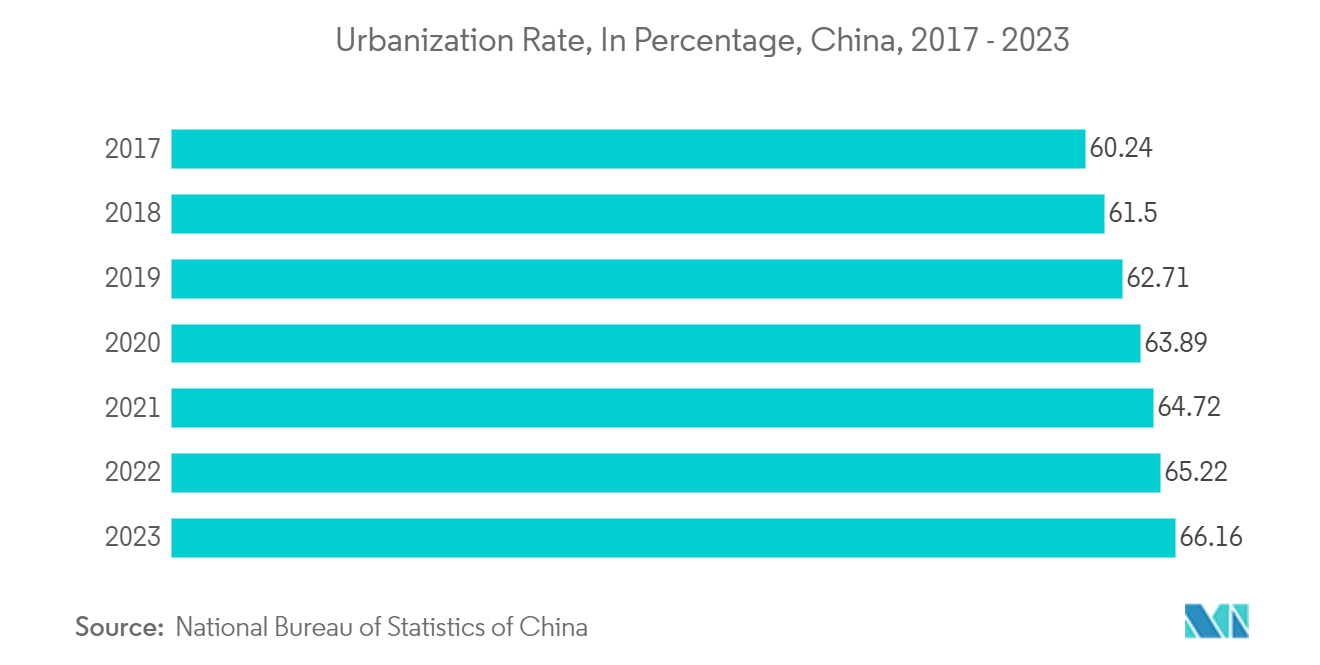Market Trends of China Surveillance IP Camera Industry
Technological Advancements to Expand the Use Cases and Adoption
- Technological advancements are pivotal in propelling China's surveillance IP camera market and reshaping the surveillance system landscape. Integrating machine learning (ML) and artificial intelligence (AI) into IP cameras revolutionizes the photography landscape. These cutting-edge technologies boost IP cameras' capabilities, enabling features like automated photo recognition, real-time predictive photography, and intelligent subject identification. As China emerges as a pivotal center for AI advancements, the IP camera market is poised for significant technological evolution during the forecast period.
- China boasts a roster of top-tier surveillance system manufacturers, including industry giants like Hikvision, Dahua Technology, and Zhejiang Uniview Technologies. These firms are renowned for spearheading technological advancements and broadening the horizons of surveillance systems. Hikvision, a global leader in video surveillance, stands out for its substantial R&D investments, which are supported by a workforce of thousands of engineers.
- In Shenzhen, Huawei's 5G-enabled cameras contribute to the smart city infrastructure, delivering real-time insights on traffic, public safety, and environmental conditions. This bolsters urban management and response capabilities. Other companies are also pushing advancements, further accelerating the country's surveillance adoption. As China's 5G network expands, it facilitates high-speed data transmission. This enables real-time video streaming and remote monitoring with minimal latency, ensuring more reliable and extensive coverage.
- As urbanization in China accelerates, so does the demand for advanced surveillance systems. Consequently, the IP camera industry's technological advancements are enabling these devices to manage high traffic volumes and operate efficiently in bustling environments. For instance, in 2023, China's urbanization rate reached 66.16%, according to the National Bureau of Statistics, highlighting a steady upward trajectory. This increase emphasizes the urgent need for enhanced surveillance solutions to ensure urban security.

The Government Sector to Remain a Prominent Demand Driver
- China is one of the world's most surveilled nations, underscoring the government's strong focus on security. Recent regulations further highlight this emphasis. Developers, especially those receiving substantial government funding, are now mandated to integrate surveillance systems into their projects. This move aims to ensure transparency and accountability. Specifically, these regulations zero in on firms granted at least CNY 30 million (approximately USD 4.2 million) in government funds. The overarching objective is to strengthen the oversight of investments and optimize public spending efficiency.
- Surveillance measures extend to urban zones, public transit, and sensitive sites, serving the dual purposes of upholding social order and surveilling potential dissent. Notably, in the central Hubei province, Xiangyang has rolled out an advanced traffic management system, leveraging AI and internet-of-vehicle technologies. Moreover, the advent of high-speed 5G networks has facilitated the integration of high-definition IP cameras, enabling seamless data transmission and remote monitoring.
- The government partners with private tech firms to enhance surveillance. For example, Huawei and Hikvision work with city governments to deploy advanced IP camera systems. These cameras, installed in parks, squares, and commercial zones, monitor crowds, deter crime, and ensure public safety. Hikvision, a leading Chinese surveillance camera manufacturer, has seen significant domestic revenue growth. In 2023, the company recorded USD 8.46 billion in domestic revenue, marking a 6.12% growth rate, highlighting the strong demand for its technology.
- Beijing has established an extensive surveillance network, merging thousands of cameras with advanced AI for facial recognition and behavior analysis. Shenzhen is mirroring this approach, rolling out its smart city program that features a broad deployment of IP cameras. Moreover, projects such as Skynet and Safe Cities have further bolstered the camera network, with the current count surpassing hundreds of millions.
- China's increasing public sector investments in infrastructure are set to bolster the growth of the market studied, with surveillance cameras emerging as vital components of urban infrastructure. As reported by the Ministry of Finance of the People's Republic of China, public investments in China's transport infrastructure reached CNY 1,220.6 billion (approximately USD 170 billion) in 2023.


